- Offensive Techniques & Strategies
Transition Defense
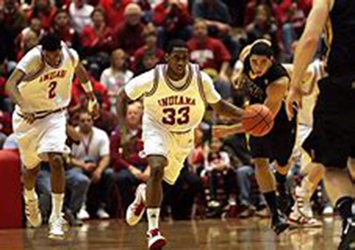
The Case for the Defense
Do you incorporate defensive transition in your practices or do you just give it lip service, and just remind them during a game not to run back on defense with their backs to the ball after they have been burnt by an over the top pass and easy layup?
Good transition defense really starts with good offense. When players take good care of the ball and take good shots along with strong offensive rebounding and defensive balance, it makes it difficult for the opponent to push the ball. However, do not do not leave defensive transition up to chance.
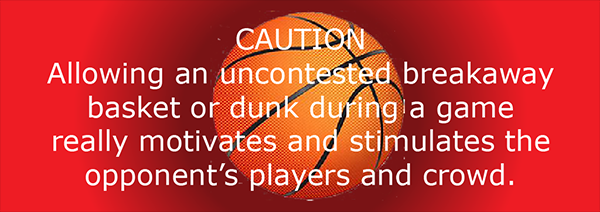
| Prevention | Def Balance & Ball Vision | Outnumbered Situations | Missed Shots | Turnover Recovery | Block Shot Recovery | Game Strategies | Implementation |
Defensive Fundamentals Required
 Basic Defensive Concepts & Techniques
Basic Defensive Concepts & Techniques

Preventing & Limiting Fast Break Opportunities
Twelve (12) Musts of Transition Defense
When teams walk the ball up the court, they are much easier to defend because the defense is able to get its players back into positions near the basket where they can execute pressure denials and traps. However, when teams continuously push the ball up the court and flow into early offense, it can prevent or hinder the best of preplanned defensive disruption scenarios by forcing the defense to "react" rather than "act or attack."
Take care of the ball offensively. Fast break basketball thrives on turnovers and bad shots.
Have good shot selection. Take open shots with teammates in offensive rebounding position. No off balance or rushed shots.
Employ sharp, accurate passing. Eliminate all unforced turnovers (bad passes and violations).
Go to the offensive boards. Force the opponent wings to defend (box out) against offensive rebounds instead of leaving early on fast break.
Maintain defensive balance. Especially on three point shots, where long rebounds can trigger a fast break.
-
Sprint back on defense.
-
Get ahead of the ball and establish a defensive numerical advantage. Do not run back side by side with your assigned opponent. Keep the other team from scoring, not your opponent.
It is imperative to have vision on the ball at all times. This is especially true when in defensive transition. Defenders should NEVER run back on defense with their backs to the ball.
-
Do not just get back on defense. Get set and attack. Force the opponent into making at least 2 passes prior to a shot. Every pass forced allows an extra defender to get back.
-
All players should have a working knowledge in defending out number situations. Successfully defending an outnumbered situation is a "Really Big Play" and often times makes the difference in winning and losing.
Aggressively rebound (box out) and do not give the opponent any second chances.
-
Counter break off opponent's turnovers and missed shots. Up tempo, fast breaking teams are very susceptible to counter attacks.

Maintaining Defensive Balance & Ball Vision
Offensively, players should know their rebounding and defensive responsibilities at all times. Every set play and pattern must have offensive rebounding and defensive balance components built-in. However, defensive safety responsibility does not mean standing at midcourt. The defensive safety can be in the baseline corner or wing as long as they are moving toward midcourt as the shot takes place.
Offensive Rebounding
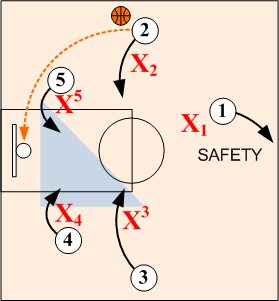
It is extremely difficult to win a game if you get only one shot. This is why teams should strive to establish two offensive rebounds on the weakside on all shots. Box out the defenders.
Defensive Balance - "Bigs"
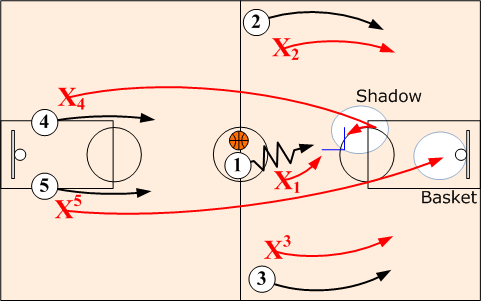
When the "Bigs" sprint back, the first "Big" has basket responsibility. The second "Big" assumes a "Shadow" position supporting the On-Ball defender preventing or discouraging any dribble penetration.
Maintaining Defensive Balance on Fast Breaks
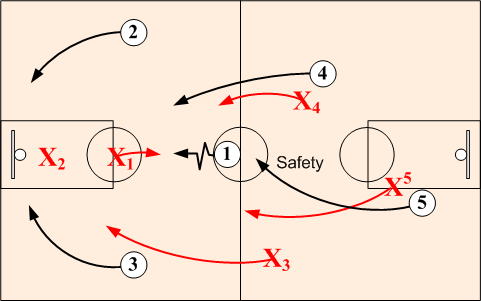
If/when a player is not filling primary lane, they should hold up at half court and observe the action. If a shot opportunity is not available on the initial break, then they should continue into early offense flow. However, if the defense should gain ball possession, they are in good position to eliminate or stop any counter fast break.
Eliminate "Stupid Hustle"
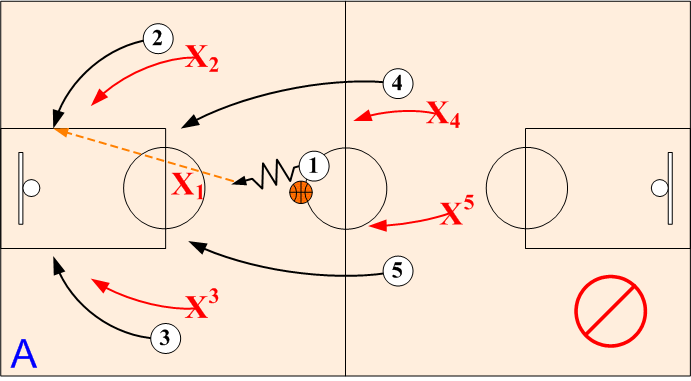
Turning a 3-on-1 break into a 5-on-1 break is 'stupid' hustle. It leaves a team very vulnerable to a quick counter break.
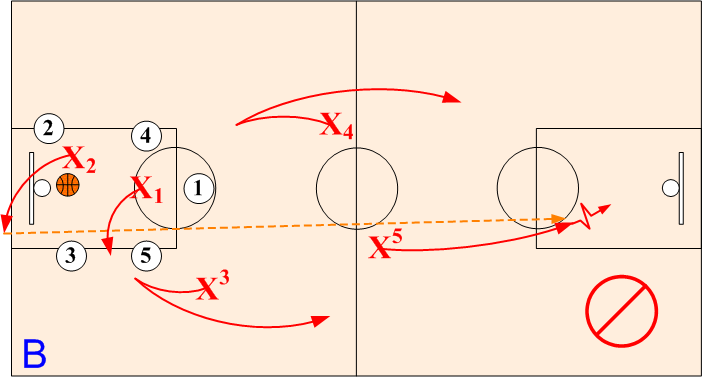
There is nothing more demoralizing than to score on an easy break only to have the opponents retaliate at the other end with an easy layup of their own.
Defensive Transition Rule
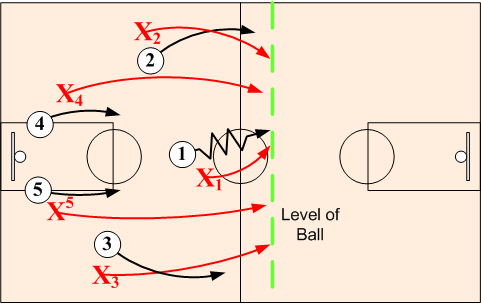
"Seek the Level of the Ball"
All defensive players must strive to stay ahead of the ball. Adherence to this rule will always provide the numerical advantage to the defense. Never run side by side with your assigned opponent. Defenders do not need to guard or be concerned with any offensive opponent in the back court behind the ball.
Sprint Back Maintaining Ball Vision
Defenders should never trot back on defense with their backs to the ball. On all turnovers or missed shot rebounds, defenders must sprint back on defense seeing the ball at all times by looking over their shoulder. Accelerate! In defensive transition, the first three or four steps are the most critical. Sprint back, get set and attack. Watch the ball-handler's eyes. Almost all passers telegraph their passes.

Play Up the Lane
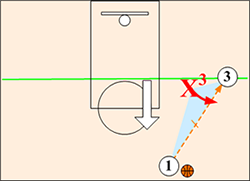
Defenders should play "Up the Lane" between their opponent and the ball in a "Ball-You-Opponent" triangle position at all times. Any pass to an opponent should go through the defender.
CAUTION: Do not allow any uncontested pass over 15 feet since it compromise the defense and opens up the entire court to the offense. It also forces ALL defenders to make major defensive adjustments making them very vulnerable in the process.
Back Court Rule
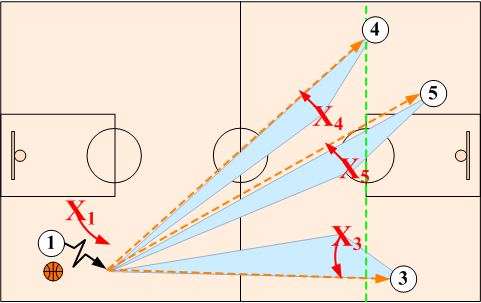
The longer the passing lane, the further up the passing lane the defender should play. In defending against full court passes, defenders should play above the free throw line extended until the ball crosses the mid court line.

Principles & Techniques of Defending
Out Number SituationsTransition defense starts with being able to defend the out numbered situation. Players should be well schooled in defending out number situations because it often times make the difference in winning and losing. However, do not make the mistake of assuming or taking for granted that players are already skilled in handling the out number situations. Players need be constantly trained to always hustle (sprint) back on defense while maintaining vision on the ball.
Defensive goals and objectives
To sprint back ("Wolf") without hesitation on defense. An out number situation should never last more than 2 or 3 seconds. Employ and enforce the "Level of the Ball" rule.
-
To pressure the ball handler. Delay advancement of ball down court in order to allow time for the defensive pursuit to catch up. Pressuring the ball also makes dribbling and passing more difficult and increases the chance of offensive mistakes.
To force the offense into making an extra pass in order to give defensive help time to arrive.
To prevent any lay-up or easy shot. Force the offense into taking low percentage rush or hurried shots.
To prevent any second efforts. Box out and rebound the ball. Do not allow opponents a second effort.

Defending Outnumbered Situations Techniques
| Break Aways | 2-on-1 Situations | 3-on-2 Situations |
Defending Break Aways

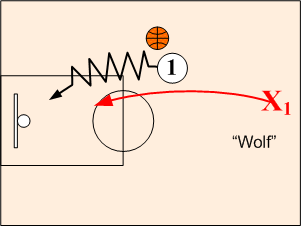
One Against None
Pursuing and catching a dribbler from behind to block or disrupt a shot is a "Really Big Play." A Really Big Play (RBP) is one of those situations in basketball where a single action can make the difference in the outcome of the game.
Sprint back. "You are never too late on defense."
-
Attempt to block the shot low with near hand
Caution: When players attempt to block high, it usually ends up in a foul or being out of position for the rebound on a missed shot.
-
Stop and rebound!
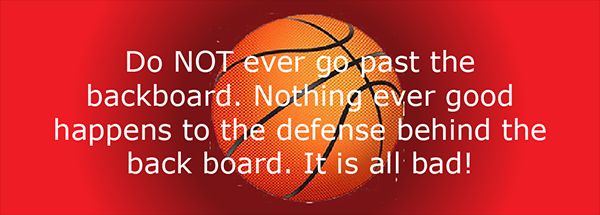
Defending a 2-on-1 Situation
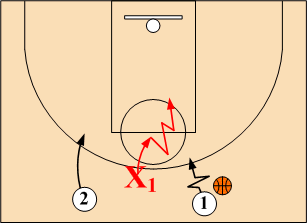
"Buy Time"
Every extra pass the offense is forced to make provides an opportunity for one additional defensive player to get back. Contain the dribbler do not reach or try to steal the ball.
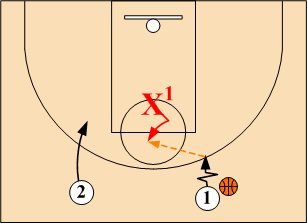
Anticipate Pass
The vast majority of time, the dribbler will pass the ball rather than shoot it on a Two-on-One situation.
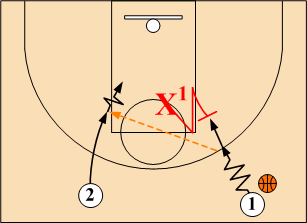
Take a Charge
Every extra pass the offense is forced to make provides an opportunity for one additional defensive player to get back. Contain the dribbler do not reach or try to steal the ball.
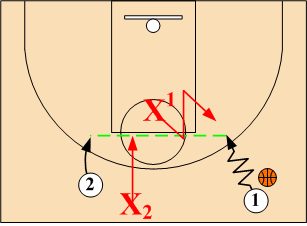
2-on-1 with Help
Try to wait until help ("WOLF") is in the passing lane before committing to the ball.
Defending 3-on-2 Situations
Players must communicate. Pressure on the ball is vital. 75% of the time, the dribbler will pass to the same side they are dribbling.
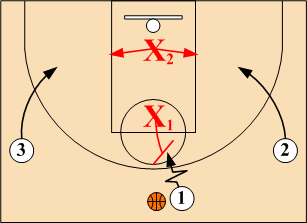
Play Tandem Defense
Defender X1 assumes an On- BALL position, pushing O1 to sideline or corner. Whenever possible, X1 should put pressure on the ball prior to O1 crossing half court. X2 has first pass responsibility.
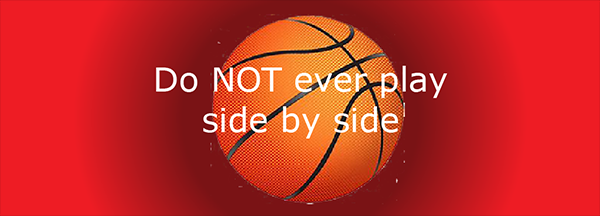
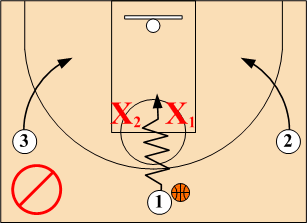
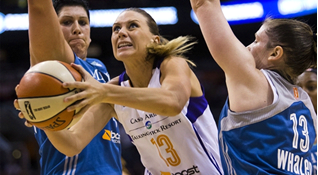
Playing side by side allows the offensive player to split the defense for an easy shot and/or foul.
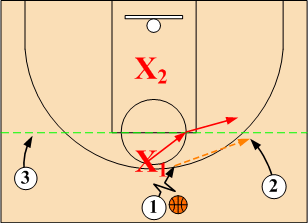
Stay
If the pass to the wing goes in front or to the side of X1, X1 stays with the ball, and assumes an ON BALL position against O2. X2 remains in a low Helpside I position.
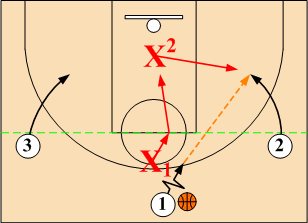
Rotate
If the pass to the wing goes behind defender X1, then X2 closes out to O2, pushing O2 to baseline checkpoint. X1 drops quickly into a Low Helpside I position.
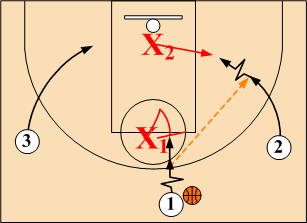
Take a Charge
The majority of time, the passer will continue on their path to the basket after making a pass.
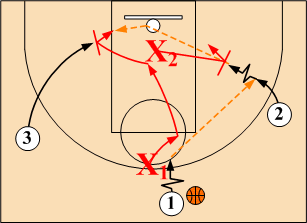
Rebound
Do not forget to rebound. The offense still has the numerical advantage. Rebound and bust out. Counter attack.

Missed Field Goal Attempt
By immediately applying disruptive pressure to the rebounder and the outlet to the point guard, the defensive team forces the offensive team into reacting the second the rebound occurs. This either forces a turnover on the outlet pass or slows the ball handler down in the back court negating any quick pushes or fastbreaks or long passes into the front court area. The other defenders match up to nearest offensive players to prevent any quick transition open shots or penetrations for lay ups before the defense is able to become organized.
| Jamming Rebounder | Outlet Disruption | Slowing Penetration | Matching Up | Trap Variation |
Phase 1. Jamming the Rebounder and Denying the Outlet Pass
The closest defender to the rebounder "Jams" and disrupts the outlet pass. Point defender finds and aggressively denies outlet pass to primary ball handler while the other three defenders sprint back with basket responsibility.
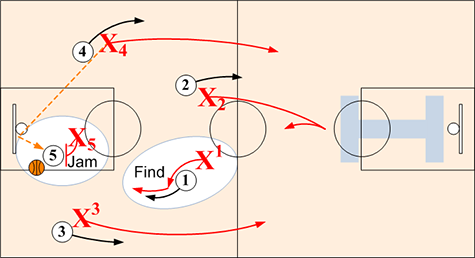
The closest defender, X5, aggressively JAMS the rebounder O5 delaying any quick outlet pass. X1 immediately finds O1 and aggressively denying the outlet pass to primary ball handler. Defender X2 sprints back to prevent any long passes. If there are no offensive players deep X2 can cheats up. Defenders X3 and X4 sprint release down the sidelines, turning at mid court to see the ball, and then move to a pass denial on O3 and O4 or on whoever is running that side lane.
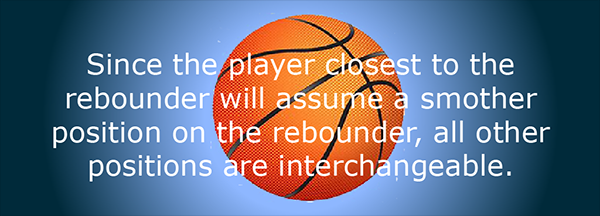
Taking the Ball Out of the Best Ballhandler's Hands
"There is nothing worse than turning the ball over on an outlet pass." However, do not leave this up to chance. All players should have a working knowledge on how to anticipate and attack outlet passes. The ability to "Find" and disrupt outlet passes not only prevents fast breaks; but, in addition, in taking the ball out of the point guard's hands, disrupts the opponent's ability to execute their set offense. 5 Ways to prevent and disrupt the outlet pass:
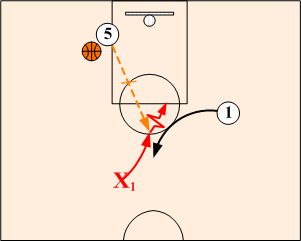
1. Attack the Outlet Pass
Defender X1's first priority is to find and deny any direct outlet pass to ball handler O1. Be alert and take full advantage of any careless outlet passes.
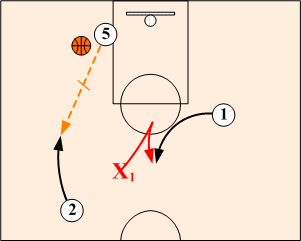
2. Complete Pass Denial
Defender X1 immediately assumes an aggressive pass denial position on O1 and does not allow the primary ballhandler O1 to receive the ball.
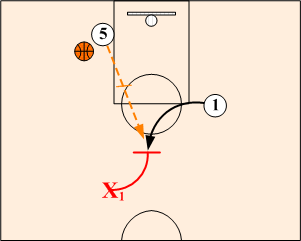
3. Take a Charge
When X1 cannot deny the passing lane to O1, X1 should establish a good defensive position directly in front of the receiver and attempt to take a charge or force the ballhandler into committing a traveling violation. Since the receiver is looking back for the outlet pass, they are very susceptible to committing an offensive charge or traveling violation.
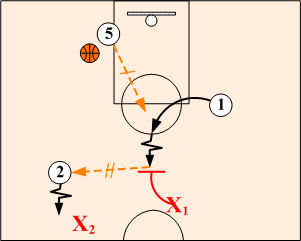
4. Force a Premature Pass
If the primary ballhandler O1 does receive the outlet pass, defender X1 then pressures O1 into giving up the basketball.
In forcing a premature pass, the ballhandler will often times commit a traveling violation or make a bad pass.
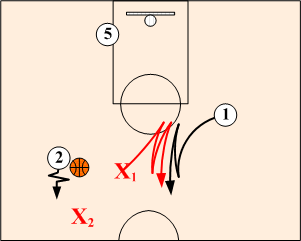
Once the ballhandler O1 gives up the ball, X1 assumes an aggressive pass denial position against O1 preventing any return pass.
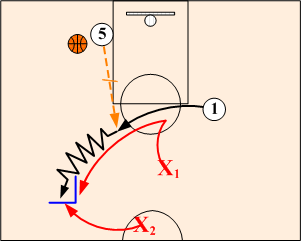
5. Trap Option
Defender X1 forces O1 to sideline "Pushpoint." Defender X2 double teams O1 with X1 on a hard trap. If O1 gives up the ball, defender X1, then assumes a strong pass denial position and prevents O1 from receiving a return pass.
Phase 2: Slowing Down Ball Handler's Penetration
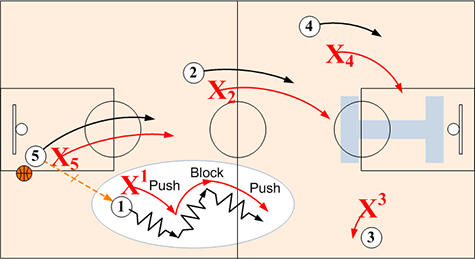
Once the outlet pass is made to O1, defender X1 assumes a low, push position forcing O1 toward near sideline Pushpoint into box pressure. Defender X1 attempts to force O1 into making 3 to 4 change of directions to slow push down. If O1 picks up the dribble, X1 assumes an aggressive "Jam" or smother position on O1. Weakside defenders X2 and X4 assume Helpside I positions while X3 assumes a strong ball side denial on O3.
Secondary Outlet Match-ups
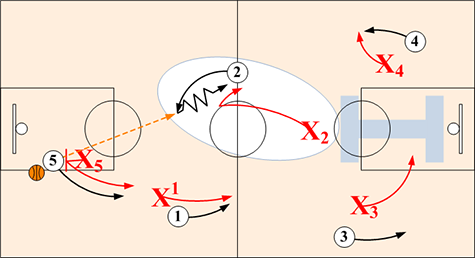
When the outlet pass is made to the secondary outlet O2, sideline push into box pressure is initiated. Defender X1 maintains a strong pass denial position against the primary ball handler O1, and all the Ballside and Helpside defensive fundamental techniques are in effect.
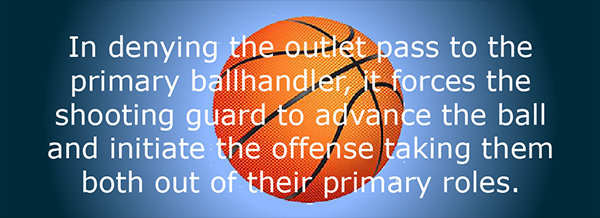
Recovering and Matching Up Against Deep Outlet Passes
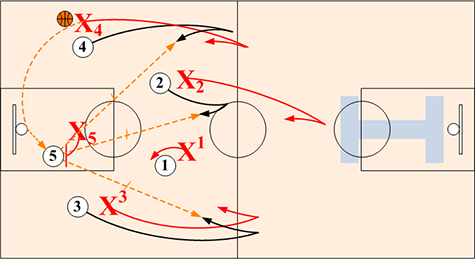
In situations, when a deep outlet pass is made or an outlet pass into the middle is made as a result of the defenders being unable to establish and apply pressure on the rebounder and outlet, then full court pressure is off and basic disruptive pressure half court rules are in effect.
Variation: Trapping the Outlet Pass
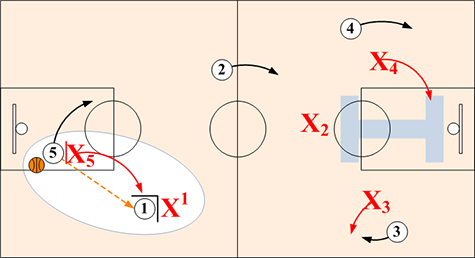
Teams that run a lot usually only have one primary ball handler. Therefore, it is imperative to deny the ball handler the ball and force the shooting guard to bring the ball up court. However, if the defender is having a difficult time in stopping the primary receiver from advancing the ball, then go "Green" and double team. Defender X5, smothering the rebounder, sprint releases as the outlet pass leaves the rebounder's hands and traps O1 with X1.
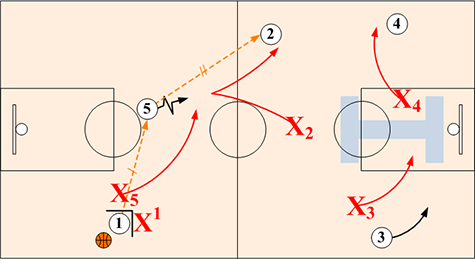
Pass Out of Trap - Matching Up
If/when O1 passes out of the trap to O5, X1 assumes a strong pass denial position on O1 preventing any return pass from O5 or O2. Defender X2 steps out and temporary holds O5 dribble penetration until X5 can match up with O5. O2 then releases to a pass denial position on O2. X4 closes out to O4 and X3 drops to a Helpside "I" position. All disruptive pressure concepts and fundamentals are in effect.

Missed Free Throw Attempt
On a free throw attempt, the defenders should line up according to their positions for applying a full court or half court press. In person to person pressure, players should align themselves next to the player that they are guarding. For zone pressure players align according to position in the press. However, some alignment and assignment adjustments may be needed to account for the player shooting the free throw.
Jamming the Rebounder and Denying the Outlet Pass
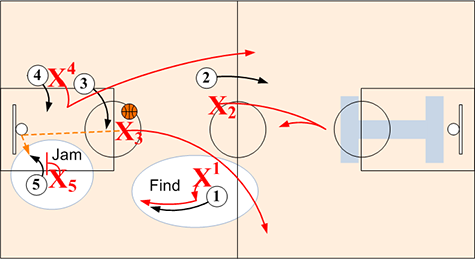
On a missed free throw, basically, the same principles are used as a missed field goal attempt. Closest player X5 “JAMS” the rebounder and defender X1 prevents an outlet pass to the primary ball handler O1. Other three defenders sprint back to protect the basket.
Sideline Push - Cutting the Court Down in Size

Once the outlet pass is made to O1 sideline push into box pressure is initiated. Defender X1 assumes a low "Nose on Chest" position forcing O1 toward near sideline pushpoint. Defender X1 attempts to force O1 into making 3 to 4 change of directions to slow push down. If O1 picks up the dribble, X1 assumes an
aggressive "Jam" or smother position on O1. Weakside defenders X2 and X4 assume Helpside I positions while X3 assumes a strong ball side denial on O3.Secondary Outlet - Match-Ups
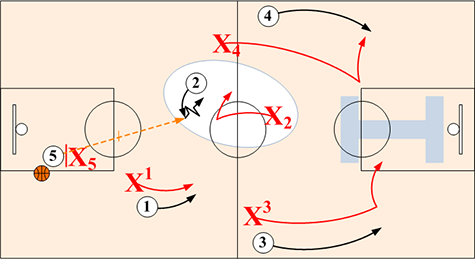
When the outlet pass is made to the secondary receiver O2, defender X1 maintains a strong pass denial position against the primary ball handler O1, and all the on and off ball disruptive pressure fundamental techniques are in effect.

Made Field Goal or Free Throw
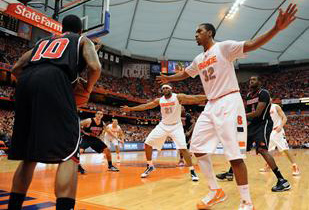
Made field goals and free throws, affords the defense with an excellent opportunity to set up and apply full court or half court pressure. To learn more about the various presses available and their application, click on the desired link below:

Turnover Recovery - "Erasing Bad Plays"
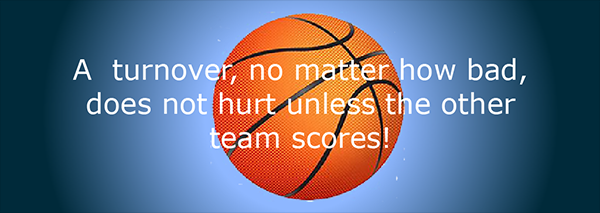
Defensive transition after a turnover is a frequent and, often times, overlooked situation by coaches in their defensive preparation. Any time the ball is turned over, the offensive players need to know that they must make a quick transition to defense and make every effort to make a defensive stop.
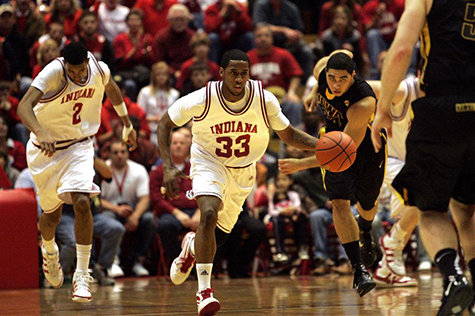
"You are never too on Defense"
Hustling back and making a defensive stop after a turnover is a “Really Big Play (RBP)” in basketball. A turnover, no matter how bad, can be canceled out or “Erased” by increasing the defensive intensity and making a defensive stop. Defenders must be determined not to ever give up an easy layup during a game. This usually just requires hustle and effort on their part.
Recovering After a Pass Turnover
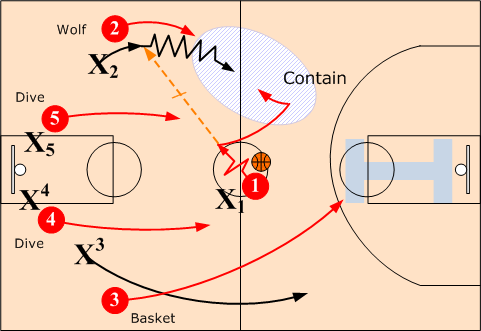
On a turnover, the player who made the pass O1 must contain and slow the interceptor’s dribble penetration by influencing the ball handler toward a sideline Pushpoint. The receiver O2, must “Wolf” and pursuit the ball hander from behind. The off wing O3 must sprint release and defend the basket until the “Bigs” can get back. The “Bigs”, O4 and O5, must dive to the basket and then match up.
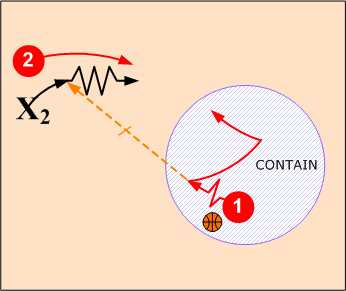
Upon turning the ball over, ideally, the passer should retreat first and then pick up the player with the ball. They must contain rather than attacking the dribble to in order to "Buy time" for their teammates to recover and get back on defense.
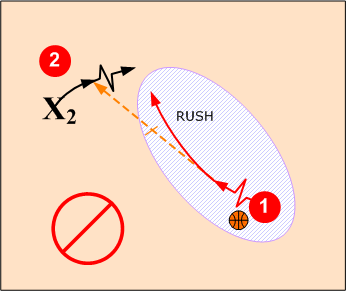
However, in reality, the passer’s momentum is towards the receiver and the natural reaction is to immediately stop the ball. This usually results in either the ball handler getting past the defender or with the defender picking up a reaching foul. Therefore, it is imperative that players are taught to contain any time an interception should occur.
Recovering After a Steal (Dribble)
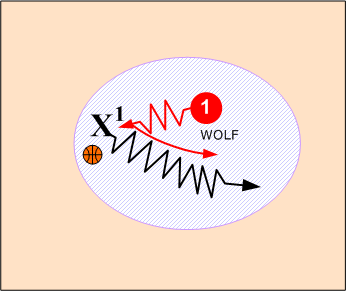
When the defender steals the dribble, the dribbler must sprint back (“WOLF”). Pursuing and catching a dribbler from behind is a “Really Big Play.” In most cases the dribbler will take extra bounces on the way to the basket allowing the defender to catch up. The defender should block the shot low using the near hand and NEVER go past the backboard.

Block Shot Recovery
“Defensive stops after a block shot are paramount”
Block shots are similar to turnovers in that they can catch the offense out of position, creating fast break opportunities that can lead to easy baskets. Therefore, players must be alert when a shot is blocked. On blocked shots the closest player, usually the shooter, to the rebounder “Jams” and disrupts any quick outlet pass. The point guard's defender finds and aggressively denies the outlet pass to the primary ball handler while the other three defenders sprint back.
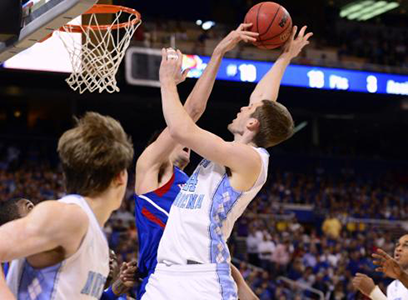
Phase 1: Jamming the rebounder and denying the Outlet Pass
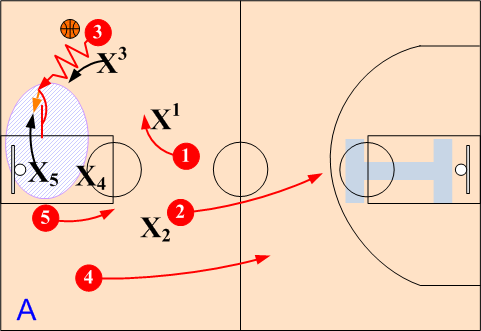
On the blocked shot, shooter O3 aggressively JAMS the rebounder X5 delaying any quick outlet pass. O1 immediately finds O1 and assumes a strong pass denial position. O2 sprints back to prevent any long passes. O4 and O5 sprint back.
Phase 2: Slowing Down Ball Handler's Penetration & Matching Up
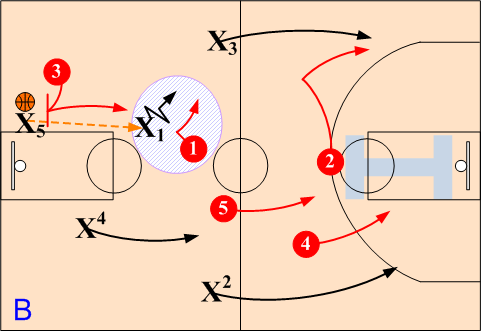
Defender O1 pushes ball handler X1 to sideline Pushpoint. O3 pressuring the rebounder, releases on outlet pass, and sprints back (“Wolf”). O2 assumes a pass denial on X3 while O4 & O5 assume Helpside I positions against X2 & X4. Getting back quickly and preventing an easy basket after a blocked shot is a “Really Big Play.”

Game Strategies
Take care of the ball on offense. Teams have a difficult time fast breaking against good shots selection and ball handling. Go hard to the offensive boards. Second efforts win games. Scout your opponent. Players need to know what early offense tactics to expect and how to defend them. Deny or disrupt outlet passes to the primary ballhandler.
When scouting is not possible, scout your opponent during the game. Don't be a spectator and watch the ball during the game. Be conscience and alert to any defensive loafing or jogging back on defense, especially after turnovers. Immediately substitute for any player that does not sprint back on defense. If they are so tired that they cannot sprint back on defense, have them rest on the bench.

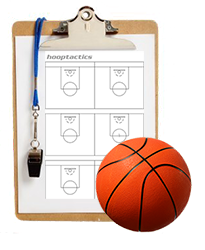
Installing & Teaching Transition Defense
| Objectives | Whole-Part-Whole Method | Drills for Skills |
Coaching Objectives
Off season and pick-up games create bad defensive transition habits. In these unorganized games, players have a tendency to hang back on offense (“Cherry Pick”) rather than hustle back on defense. As a result, during the season, coaches have their work cut out in establishing good defensive transition habits. Transition defense objectives are:
-
To develop an awareness of the magnitude and importance of defensive transition.
-
To develop the ability to see the floor and make good decisions on offense. (Teams have a difficult time fast breaking against teams that take care of the ball and take good shots.)
-
To develop a strong attitude and aptitude to rebound offensively. Second and third efforts should be commonplace.
-
To develop the practice of maintaining defensive balance on offense at all times.
-
To develop the habit of sprinting back on defense.
-
To develop the ability to successfully defend outnumbered situations and counter attack.
-
To develop the determination to make defensive stops after turnovers.
Whole-Part-Whole Method
"It's not the play or defense, but how you execute it that counts!"
Before undertaking any defense, players must have a solid, working knowledge of all of its components. Use the time tested "Whole-Part-Whole" method of teaching. Be creative and design your own offensive breakdown drills that will fit your specific needs and player abilities. Insist in correct spacing and timing along with precise footwork and execution at all times. Bad habits can be practiced as well as good ones.
Drills for Skills
Caution: Do not try to introduce and refine something in the same practice. Always introduce something new in one practice and work on execution in the next.
Proven Transition Breakdown Drills
These breakdown drills are not only excellent in developing a strong defensive transition game, but also great for preseason conditioning.
Drill: "Wolf" One-on-One Full Court
Drill: Three-on-two/Two-on-One
Caution: Defensive transition must be an integral part of every full court scrimmage.
Related Links:
Return to Defensive Strategies - Click Here
Return to Player Development - Click Here
Return to HoopTactics - Click Here
© 2026 HoopTactics All Rights Reserved.
